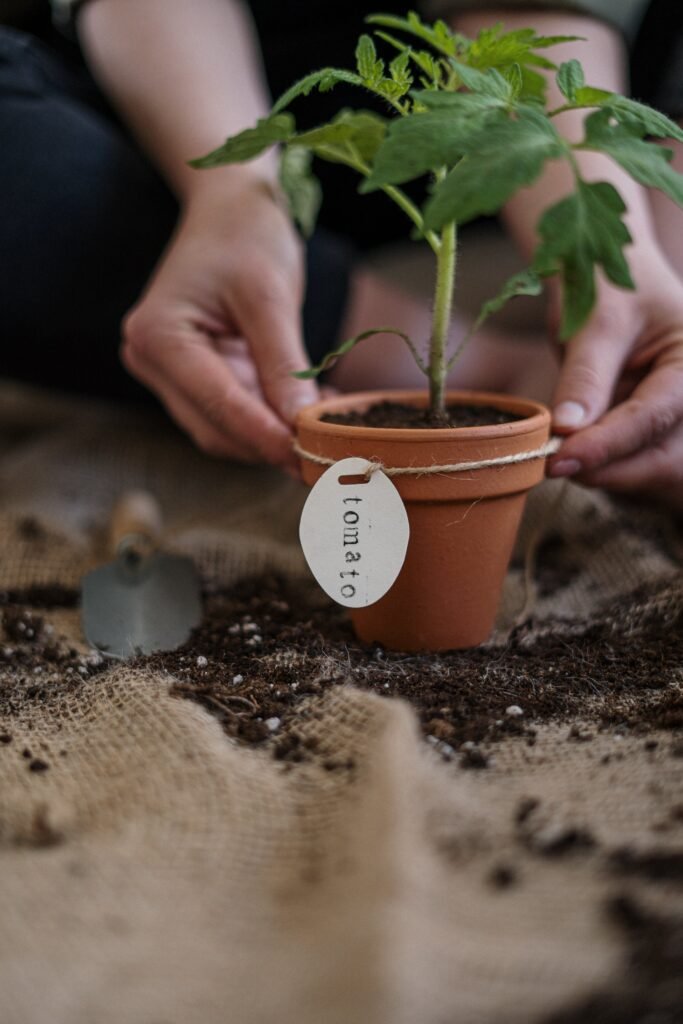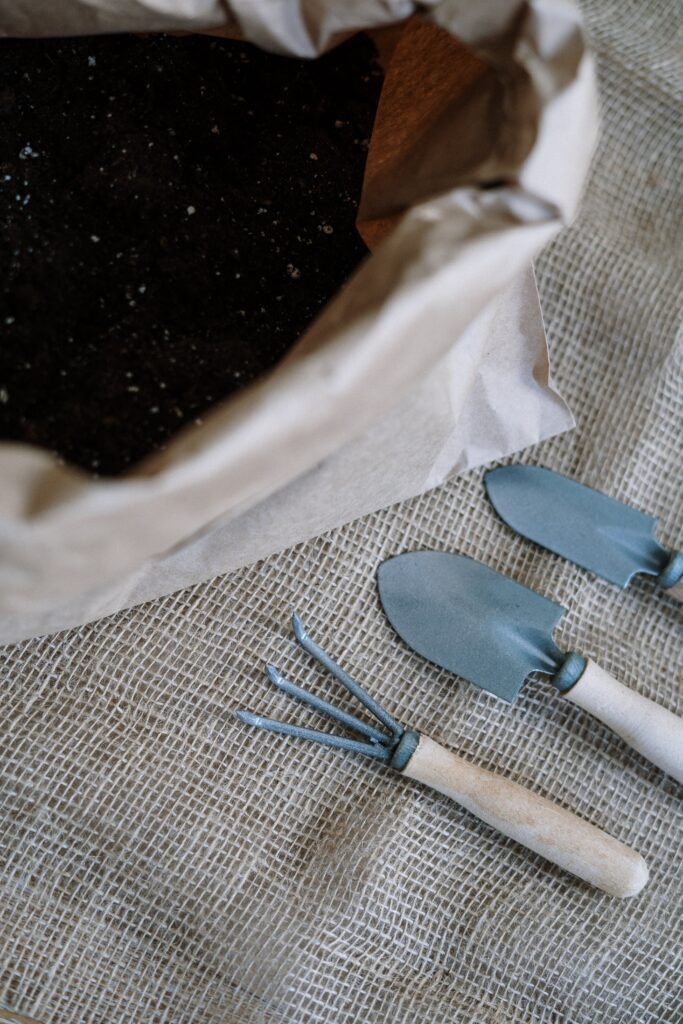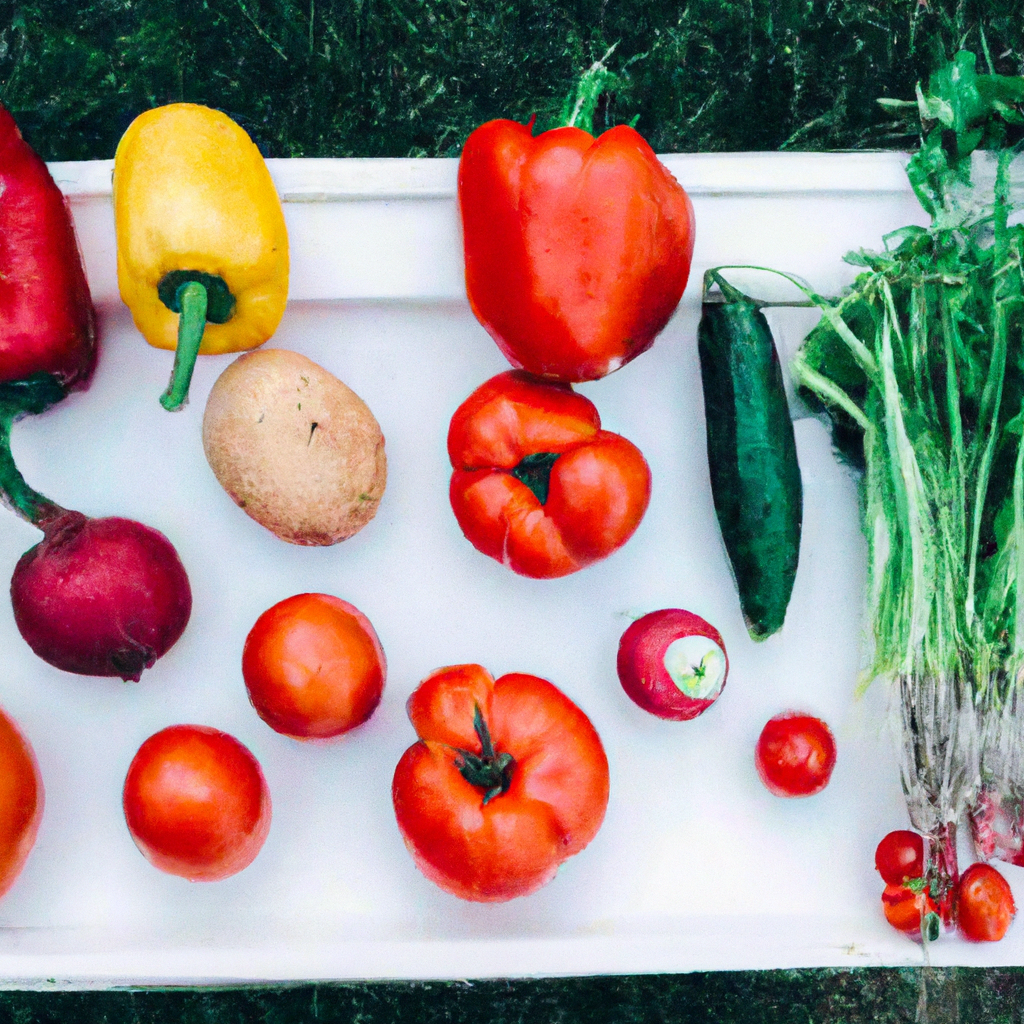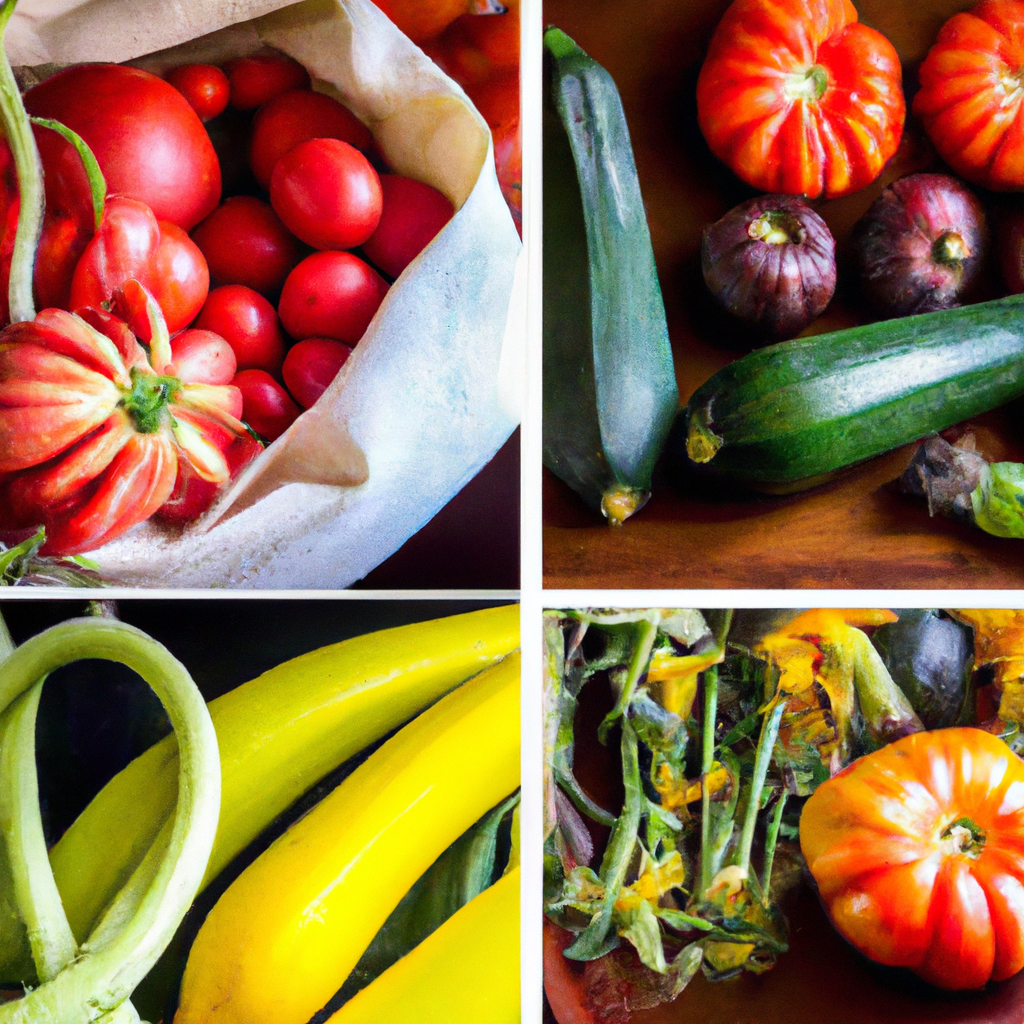
If you’ve always dreamed of cultivating your own garden but are restricted by limited space, fear not! In this article, you will discover the joy of growing a diverse range of delicious vegetables in small gardens. Whether you have a balcony, a patio, or a tiny backyard, we will provide you with valuable tips and practical advice on how to optimize your space and maximize your harvest. Get ready to embark on an exciting journey towards creating your very own urban vegetable oasis!

Choosing the Right Vegetables
When it comes to growing vegetables in your garden, it’s important to consider various factors to ensure success. One of the first things to consider is the climate and growing season in your area. Some vegetables thrive in cooler temperatures, while others prefer warmer weather. By knowing your climate and growing season, you can choose vegetables that are well-suited to your specific conditions.
In addition to climate, you’ll also need to determine the available space in your garden. Small gardens require careful planning in order to maximize the use of limited space. It’s important to choose vegetables that won’t overcrowd your garden and hinder the growth of other plants. By considering the available space, you can select vegetables that will thrive in smaller gardens.
Select vegetables that suit small gardens
When it comes to small gardens, it’s important to choose vegetables that are suitable for limited spaces. Certain vegetables are better suited to small gardens because they have compact growth habits or can be grown in containers. Examples of vegetables that are perfect for small gardens include cherry tomatoes, lettuce, radishes, and herbs like basil and parsley. These vegetables can be grown in planters, window boxes, or even hanging baskets, making them ideal for those with limited garden space.
It’s also important to focus on high-yielding and quick-growing varieties when selecting vegetables for a small garden. This ensures that you can make the most of your limited space and enjoy a bountiful harvest. Vegetables like spinach, green beans, and zucchini are known for their high yield and relatively short growing seasons. By choosing these types of vegetables, you’ll be able to maximize your garden’s productivity.

Planning the Garden Layout
Once you’ve chosen the right vegetables for your small garden, it’s time to plan the layout. Assessing the sunlight requirements of your chosen vegetables is crucial to ensure their growth and overall health. Some vegetables require full sun, while others can tolerate partial shade. By understanding your plants’ sunlight needs, you can strategically place them in your garden to optimize their exposure to the sun.
Consider companion planting when planning your garden layout. Companion planting involves planting different vegetables together to maximize their growth and health. Some vegetables have beneficial relationships with each other, such as deterring pests or enhancing pollination. For example, planting basil near tomatoes can help repel pests that commonly affect tomato plants. By considering companion planting, you can create a harmonious and productive garden.
To further optimize space in your small garden, consider using trellises. Vertical gardening allows you to grow vining plants, such as cucumbers and peas, upwards rather than taking up valuable ground space. By utilizing trellises, you can maximize your garden’s potential and still have space for other vegetables. Additionally, trellises can add visual interest to your garden and create a beautiful vertical display of plants.
Plotting the garden bed is the final step in planning your garden’s layout. Determine the size and shape of your garden bed, keeping in mind the space available and the number of vegetables you plan to grow. Raised beds are great options for small gardens as they provide better drainage and offer the opportunity to control the soil quality. Lay out your garden bed, ensuring proper spacing between plants according to their specific requirements.
Preparing the Soil
Before planting your chosen vegetables, it’s important to prepare the soil to provide the best possible growing conditions. Start by testing the soil pH and nutrient levels. This will give you a clear understanding of the soil’s composition and allow you to adjust it accordingly. Most vegetables prefer a slightly acidic pH level, so knowing the soil’s baseline pH will help you determine if any amendments are necessary.
Amend the soil with organic matter to improve its fertility and structure. This can be done by adding compost or well-rotted manure. Organic matter helps retain moisture, promotes microbial activity, and provides essential nutrients to the plants. Working the organic matter into the soil will increase its nutrient content and improve its overall quality.
Ensure proper drainage in your garden bed to prevent waterlogged soil, which can lead to root rot and other plant diseases. If your soil has poor drainage, consider adding sand or perlite to improve the structure. Alternatively, you can create raised beds or utilize containers with drainage holes to ensure excess water can easily escape.
One final step in soil preparation is mulching. Applying a layer of organic mulch, such as straw or wood chips, helps conserve moisture in the soil and suppresses weed growth. Mulching also improves soil temperature regulation and provides a protective layer for the roots of your vegetables. Spread a layer of mulch around your plants, being careful not to cover any stems or leaves.

Starting Seeds Indoors
To get a head start on your vegetable growing season, consider starting seeds indoors before transferring them to the garden. This allows you to extend the growing season and gives your plants a strong foundation before facing the outdoor elements. To start seeds indoors, gather the necessary materials, including seed trays, potting soil, and a light source.
Choose appropriate containers for starting your seeds. Seed trays with individual cells or biodegradable peat pots are great options. These containers provide enough space for the seeds to grow and make transplanting easier. Avoid using containers that are too large, as this can lead to overwatering and slow seedling growth.
Sow the seeds at the right time, taking into consideration the specific germination needs of each vegetable. Follow the instructions on the seed packet for proper sowing depth and spacing. Keep the soil consistently moist but not waterlogged, and provide adequate light and warmth for germination. A grow light or placing the seedlings near a sunny window can ensure they receive enough light.
Transplanting Seedlings
Once your seedlings have grown strong and have developed a few sets of true leaves, they are ready to be transplanted into the garden. However, before moving them outside permanently, the seedlings need to be hardened off. This process involves gradually exposing them to outdoor conditions, such as sunlight and fluctuating temperatures.
Prepare the planting holes in your garden bed before transplanting the seedlings. Dig holes deep enough to accommodate the root balls and ensure proper spacing between plants. Gentle handling of the seedlings is important to avoid damage to their delicate roots.
After transplanting, water the seedlings thoroughly to help them settle into their new environment. Fertilizing the seedlings with a balanced organic fertilizer will provide them with essential nutrients to support their growth. Additionally, protect the seedlings from pests by using physical barriers, such as row covers or netting, or by applying organic pest control methods.

Direct Sowing in the Garden
If you prefer to skip the indoor seed-starting process, you can directly sow seeds in your garden. However, proper soil preparation is still crucial for successful germination and growth. Prepare the soil by removing any weeds or debris and loosening it with a garden fork or tiller.
Make furrows or plant in rows to ensure proper spacing and organization. The depth and spacing requirements for each vegetable vary, so refer to the seed packet or gardening resources for specific guidelines. Sow the seeds at the correct depth and spacing, and cover them with soil. Water the seeds immediately after sowing to provide the necessary moisture for germination.
Caring for Growing Plants
Once your vegetables have started growing, it’s essential to provide them with proper care to ensure their health and productivity. One of the most important aspects of caring for growing plants is watering them properly. Different vegetables have varying water needs, so it’s important to learn their specific requirements. Water deeply and infrequently to encourage deep root growth and avoid surface-level moisture that can attract pests and diseases.
Regularly fertilize your plants to provide them with the necessary nutrients for optimal growth. Organic fertilizers, such as compost or fish emulsion, are great choices as they feed the plants slowly and promote long-term soil health. Follow the recommended application rates and avoid overfertilizing, as this can lead to nutrient imbalances or burn the plants’ roots.
Mulching around your plants is another important step in caring for them. Mulch helps conserve moisture in the soil, reduces weed growth, and regulates soil temperature. Apply a layer of organic mulch around your plants, leaving a small gap around the stems to prevent rotting.
Some vegetables, such as tomatoes or peppers, benefit from pruning and staking for support. Pruning removes excessive foliage and promotes air circulation, reducing the risk of diseases. Staking or using cages prevents plants from falling over or breaking under the weight of fruit. These practices help maintain plant health and yield.

Dealing with Common Pests and Diseases
Garden pests and diseases can quickly wreak havoc on your vegetable plants if left unchecked. It’s essential to identify common garden pests and take appropriate measures to control them organically. Common pests include aphids, slugs, snails, and caterpillars. Implementing companion planting strategies, using physical barriers, and applying organic pest control methods, such as neem oil or insecticidal soap, can help protect your plants from pests.
In addition to pests, diseases can also affect your vegetable plants. Recognizing the early signs of diseases, such as wilting, discoloration, or unusual growth, is crucial for preventing their spread. Applying appropriate disease management techniques, such as removing infected plants promptly or using organic fungicides, can help control and minimize the damage caused by diseases.
Harvesting Vegetables
The ultimate reward for your gardening efforts is the harvest of fresh and delicious vegetables. Knowing when vegetables are ready for harvest is essential to ensure their flavor and quality. Each vegetable has different maturity signs, such as color change or firmness, so it’s important to learn these indicators for the vegetables you are growing.
Harvesting techniques also vary depending on the vegetable. Some vegetables, like lettuce or herbs, can be harvested by picking individual leaves or stems as needed. Others, such as tomatoes or peppers, are best harvested by carefully twisting or cutting the fruit from the plant. Proper harvesting techniques ensure minimal damage to the plants and allow for continuous production.
After harvesting, preserving and storing the vegetables correctly will help prolong their freshness. Vegetables like tomatoes or cucumbers are best stored at room temperature, while others, like leafy greens or root vegetables, benefit from refrigeration. Additionally, consider preserving your harvest through freezing, canning, or pickling to enjoy the flavors of your garden throughout the year.
Seasonal Maintenance and Crop Rotation
Once you’ve harvested your vegetables, it’s important to clean up the garden to maintain its health and prepare for the next growing season. Remove any plant debris, weeds, or fallen fruits to prevent the harboring of pests or diseases. Compost healthy plant material to return nutrients to the soil.
Crop rotation is a beneficial practice to improve soil health and prevent the buildup of pests and diseases. Rotating crops ensures that plants from the same family are not grown in the same spot year after year, reducing the likelihood of soil depletion or the spread of diseases. Plan your crop rotation based on the families of vegetables you are growing and follow a three-year cycle if possible.
During off-seasons, consider cover cropping to improve soil fertility and structure. Planting cover crops, such as legumes or grasses, helps control erosion, suppress weeds, and fix nitrogen in the soil. Cover cropping also adds organic matter when tilled under, promoting soil health and providing a nutrient-rich environment for future vegetable growth.
Lastly, use the fall and winter seasons to plan and prepare for the next growing season. Evaluate your garden layout, review the success and challenges of the previous season, and research new vegetables to try in the coming year. By taking the time to plan and prepare, you’ll be well-equipped to have another successful growing season.
In conclusion, growing a variety of vegetables in a small garden is an achievable and rewarding endeavor. By considering the climate, available space, and specific needs of each vegetable, you can create a thriving and productive garden. Proper soil preparation, seed starting, transplanting, and care throughout the growing season are key factors in ensuring the health and productivity of your vegetables. By addressing common pests and diseases, harvesting at the right time, and practicing seasonal maintenance, you can enjoy the fruits of your labor and continue to cultivate a thriving garden year after year.





